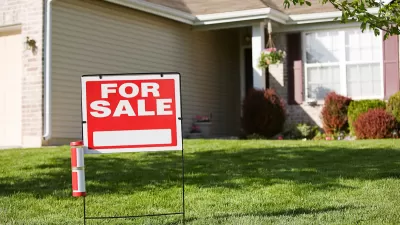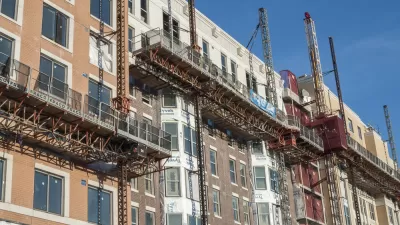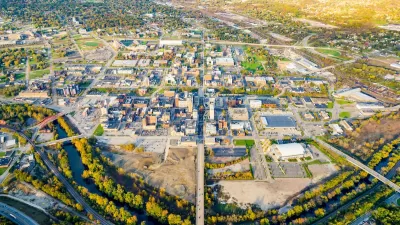While the middle class does not face the same kind of nationwide affordability crisis as low-income populations, geography and demographics are placing new stress on middle-income households.

"While housing affordability has long been a problem for low-income families, middle-income families are increasingly facing affordability challenges, especially in urban areas with strong labor markets," Jenny Schuetz writes. In a lengthy piece for Brookings, Schuetz uses data from the Census Bureau's Individual Public Use Microdata Sample (IPUMS) to examine housing stress on middle-income households.
Defining "middle-income" as households in the middle three income quintiles for their metro area, Schuetz writes that "where families live has wide-ranging consequences for their well-being. Location affects access to jobs, transportation, and social networks, as well as the quality of local services such as schools and public safety."
While homeownership is not easily accessible to lower-income households across the country, "among middle-income households, substantial homeownership gaps exist by age and race." Of course, homeownership also lags among the middle class in expensive cities. Given that owning a house acts as an effective means of "forced savings," Schuetz recommends that policymakers consider other ways to incentivize wealth-building, including other obligatory savings mechanisms and tax incentives.
She concludes by noting that in expensive cities with strong labor markets, "any long-term solution must involve increasing housing supply, especially near jobs and transit infrastructure."
FULL STORY: Cost, crowding, or commuting? Housing stress on the middle class

Alabama: Trump Terminates Settlements for Black Communities Harmed By Raw Sewage
Trump deemed the landmark civil rights agreement “illegal DEI and environmental justice policy.”

Planetizen Federal Action Tracker
A weekly monitor of how Trump’s orders and actions are impacting planners and planning in America.

The 120 Year Old Tiny Home Villages That Sheltered San Francisco’s Earthquake Refugees
More than a century ago, San Francisco mobilized to house thousands of residents displaced by the 1906 earthquake. Could their strategy offer a model for the present?

In Both Crashes and Crime, Public Transportation is Far Safer than Driving
Contrary to popular assumptions, public transportation has far lower crash and crime rates than automobile travel. For safer communities, improve and encourage transit travel.

Report: Zoning Reforms Should Complement Nashville’s Ambitious Transit Plan
Without reform, restrictive zoning codes will limit the impact of the city’s planned transit expansion and could exclude some of the residents who depend on transit the most.

Judge Orders Release of Frozen IRA, IIJA Funding
The decision is a victory for environmental groups who charged that freezing funds for critical infrastructure and disaster response programs caused “real and irreparable harm” to communities.
Urban Design for Planners 1: Software Tools
This six-course series explores essential urban design concepts using open source software and equips planners with the tools they need to participate fully in the urban design process.
Planning for Universal Design
Learn the tools for implementing Universal Design in planning regulations.
Clanton & Associates, Inc.
Jessamine County Fiscal Court
Institute for Housing and Urban Development Studies (IHS)
City of Grandview
Harvard GSD Executive Education
Toledo-Lucas County Plan Commissions
Salt Lake City
NYU Wagner Graduate School of Public Service





























